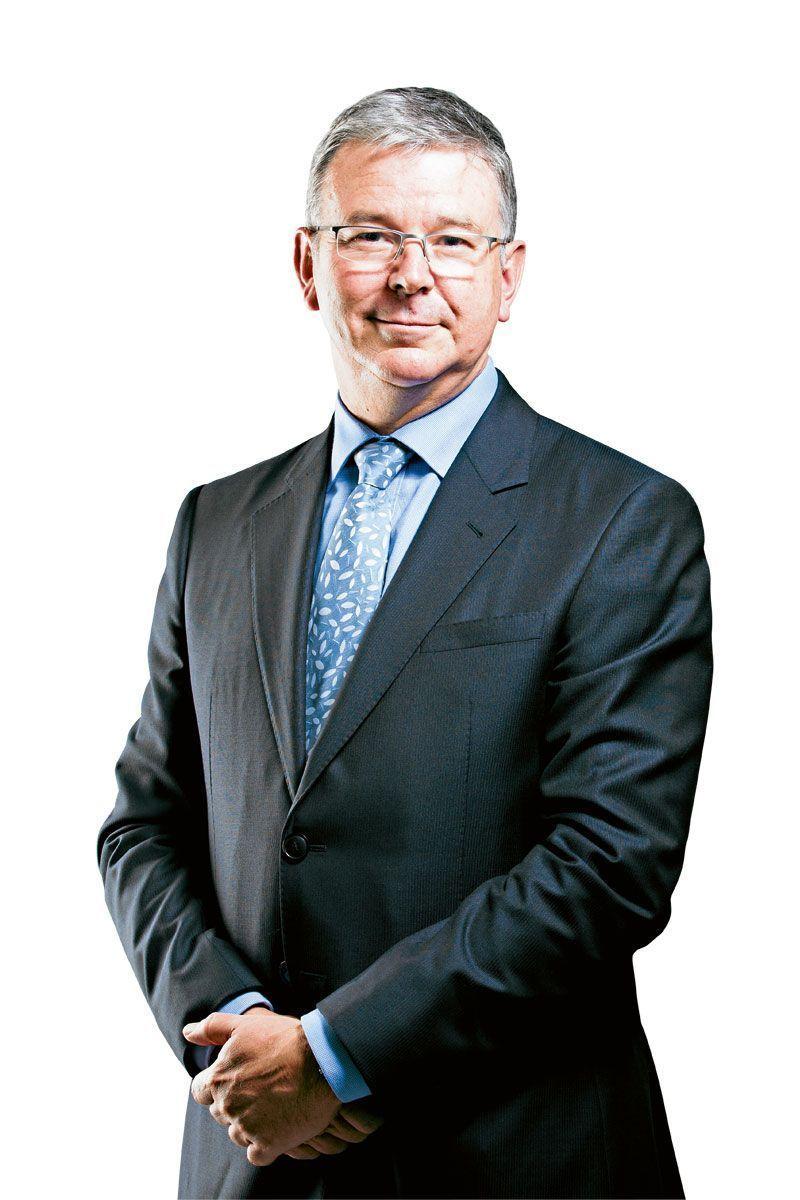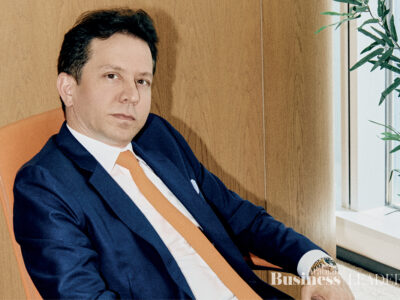Pay TV has been available in the Middle East for nearly two decades but in the past year alone, Orbit Showtime Network (OSN) has increased its subscriber base by a whopping 30 percent. According to CEO David Butorac, the company’s exceptional growth is being driven by increasing wealth in the region, a crackdown on piracy and advances in technology. In turn, the rising revenue is freeing up money for further investment, attracting even more subscribers.
“What we’re seeing is a rapidly accelerating acceptance of pay TV,” Butorac tells Arabian Business.
“The second thing is that our shareholders invested $60m to create a secure platform, i.e. the set-top box is a secure technology which is not compromised — you need to be a subscriber to watch. Previously it had been compromised so people could watch our signals without paying, now they can’t. So those two contributing factors led to the start of that growth.”
Then came the snowball effect; with increased revenue from more subscribers, OSN has been able to invest more in new channels and programmes as well as technology, enticing even more consumers to take up the product.
“What has contributed significantly in the last 12-24 months is the investments that we’re making in content,” Butorac says, declining to reveal how many subscribers the network has. “We spend hundreds of millions of dollars a year on content and we will continue to accelerate that so we can grow, bring the very best content and as the [customer] base gets bigger we’ll continue to bring more and more content so that people really have the best option.
“Ultimately, people subscribe to pay TV to watch television, to watch content. What they expect of us is to make sure that we give them the best content and we’re increasingly investing to make sure that we do just that.”
Even more investment came in the form of the purchase of Pehla Media & Entertainment last month. A major South Asian content provider, the move will see OSN launch 40 Pehla-branded channels as it looks to continue attracting the millions of Asian expats who call the Middle East their home.
This year has been the best on record so far and Butorac only sees it getting even better.
“June was the biggest month ever in sales, March was also the biggest month ever in sales [at the time], January was the biggest month ever in sales; we’re accelerating this growth curve by passing our sales targets month on month and business is rapidly growing,” he says.
“We would expect to see those sorts of growth trends continuing; when you look at the available market and the TV households and indeed the premium TV households, we’re still at a relatively low penetration level. We still see further rapid acceleration.”
The subscriber growth also has helped to stave off an initial public offering (IPO). The company had announced it was considering an IPO but Butorac dampens down any suggestion it will take place any time soon. OSN had been obliged to make a public statement because its co-owner, KIPCO, is a listed company.
Article continued on next page…
Butorac says competing against large free-to-air networks means quality not quantity is the key to success for OSN, which is owned and operated by Panther Media Group Limited, a joint venture between KIPCO and Mawarid Group Limited. The provider has 77 television series available within 24 hours of their US release, deals with every Hollywood studio to be the first to show movies in the region — often years ahead of free-to-air TV — and two exclusive Arabic language channels including the extremely popular OSN Ya Hala!.
“What we can’t do in this region is sell volume,” Butorac says. “If you look at most markets of the world, free-to-air television is very country specific and it’s not transmitted by satellite. [But] in this region, we have over 600 free-to-air channels because every country’s free-to-air services are available on a single satellite so the whole region can get them, [plus] there’s a common language.
“So what we as a premier pay TV service can’t do is we can’t offer volume as the sales point; we have to offer premium as the sales point.
“For example, in Australia, when [pay TV provider] Foxtel came along they were saying, ‘you can have 100 channels instead of the five free-to-air channels’. In Britain when Sky came along we were saying, ‘you can have… 100 [channels] instead of ten or twelve’.
“What we’re doing is making certain that the channels that we aggregate in specific genres and in general interest are high-premium channels and that’s the selling point that makes OSN unique.”
The UAE is OSN’s largest market by the number of subscribers, while Saudi Arabia is the fastest-growing market.
“Saudi will very rapidly become our biggest market because from a population perspective they have more people and as our product becomes more and more appealing to the Arabic-speaking market [more Saudis will subscribe],” Butorac says.
“We still see significant growth here in the UAE as the economy of the UAE expands and more and more people are coming here. We [also] still see significant growth in Kuwait; even though there’s not such a rapid expansion of population, there’s certainly the acceptance of our product.
“Our core focus is growing the business in the next 12-24 months, is accelerating in Saudi, accelerating in Egypt — where we’re now growing rapidly — and continuing with the expansion that’s going on in the Gulf states. The biggest growth will continue to come out of the Gulf states for the foreseeable years.”
More than 90 percent of OSN’s new subscribers are Arabic speaking, while total levels in the past have been less than 80 percent.
“There’s a misnomer that we’re an expatriate TV service,” Butorac says. “We don’t differentiate along those lines. We have to offer television that’s compelling to everybody and so we have to make certain that we’ve got a product offering that’s appropriate for everybody.
Article continued on next page…
“We’ve got 108 channels [but] most people on average watch eleven channels. The difference is your eleven and my eleven are different.
“The investments that we’ve made in bringing the very best international content and bringing it first to TV screens is now aligned by our strategy of increasingly investing in premium Arabic language content.”
Recently released movies are the biggest attraction for pay TV subscribers in the Middle East, with OSN Movies HD the most watched channel. The second most watched channel is OSN’s own
OSN Ya Hala!, which features Arabic-only content. International channels such as Discovery and National Geographic, as well as sporting channels, are also vital to the network.
“Multi-channel television is about saying, ‘come to a portfolio of channels and you choose what you want to watch’ rather than having to watch the news at 9 o’clock or the movie at 8 o’clock,” Butorac says.
“Then increasingly with technology we can say to the consumer ‘actually you can watch the movie you want to watch whenever you want to watch it.’”
Last year, OSN launched OSN Plus HD, a set-top box connected to broadband internet as well as satellite so subscribers can watch content — so far 900 movie and series titles — whenever they want. More than 100,000 subscribers have so far joined up for the free additional service and it has proven to be an enormous business asset.
“OSN Play is a value proposition because it allows the consumer to watch when they want to,” Butorac says. “The value proposition to us is that the customer who has OSN Play is churning at a rate that is significantly lower than the customer who doesn’t have OSN Play, (ie) they see the value proposition with the platform.”
Two years ago, OSN was losing customers on average after two years. Today the churn rate is 17 percent, meaning customers are staying for more than six years.
“The opportunity for us to get an economic return from that customer over a six-year period rapidly accelerates the success of the business and so bringing down churn rates is of vital importance,” Butorac says.
“That product will grow in the coming weeks and months as we launch more and more access to libraries so you’ll have nowhere else you need to go to get the best content, whether it’s the freshest content or the library’s content.
Article continued on next page…
“The next step for OSN Play is to turn it into a true second-screen experience so that when you’re sitting at home watching television — let’s say you’re watching the European golf tour on OSN — you can have your second screen with all the golf stats on it. If you’re watching a movie and you’re really into Tom Hanks you can go into the database and look up what other movies he’s been in and other information on your second screen, which is linked to what you’re watching on your [primary] screen.”
The second-screen experience is due to be available by the end of the year.
OSN also is beefing up its presence and interactivity on social networking sites such as Facebook and Twitter, where viewers can engage with the company or each other.
With many millions being invested each year, technology will be a major priority going into the future, Butorac says.
“As a broadcaster we have to keep pace with consumer demand. Consumers are increasingly adept at using new technologies… in many and varied ways. What we have to do is keep pace with that.
“We recognise there’s a demand for non-linear experiences, meaning you can choose rather than we — the broadcaster — choosing. I don’t see digital media as a disintermediating factor on our business, I see it as a huge opportunity because we own all that content and we can aggregate all that content better than anybody so these new distribution means are a means of ensuring that we create OSN as the unequivocal home of the best entertainment, the best information, [where] you can get all the international and domestic news channels, [where] you can get education services, [where] you can get all of those things, whether it’s on your TV, on your smartphone, on your tablet or wherever you are.
“And the development of that just makes OSN a product that ultimately the consumer goes ‘I just can’t possibly get by without’, and that’s the intention, that’s the strategy.
“And literally these technologies are world class, they are equal to or better than the best in the world.”
Possibly the company’s most important technological investment has been in securing its services to stop piracy. Switching to new set-top boxes in December 2011 has made it all but impossible for non-subscribers to access OSN content, which Butorac is sure has significantly contributed to the company’s growth.
“One of the key reasons we fight piracy is not just to stop people hacking our signal… it’s also in recognising and getting governments and consumers to recognise that intellectual property crime is actually not a victimless crime.
“People think it’s all right if I watch a movie for free; if Tom Cruise doesn’t get another couple of bucks, so what, he can afford it.
Article continued on next page…
“But what it stops broadcasters like us and MBC — we’re working very closely with MBC — from doing as an industry is investing in the continuing growth of production capacity.
“One of the things that we’d love to see here in the region, particularly in the Gulf is a much more enhanced production capability. And that doesn’t just come by building facilities that you hope people are going to come to, it comes by building skills sets that need investment.
“What piracy stops broadcasters here from doing is growing to a point where we can start to invest heavily in building those production skills and that’s something that we can put back into the industry if we can overcome piracy.
“There are vibrant production markets here in Egypt and in Lebanon but what I’d like to see is a bigger, broader, production base across the region so that we can all benefit from that increase in skill set.”
Government regulations exist but there needs to be tougher enforcement in some countries, Butorac says.
“We get great assistance particularly from the UAE and Saudi governments and they recognise the power of this.
“We have to get past this concept that nobody’s really getting hurt. As an industry, I think we’re able to demonstrate that people are getting hurt and it’s the industry that’s getting hurt and if we can overcome that, that will allow us to grow. And yes, governments are assisting; we have huge assistance here from both TECOM and from the government regulators in regards to implementation of pirate boxes, all these sorts of things.
“In Saudi, the information ministry is very attuned to the requirements of making certain they clamp down on illegal reception so we can make certain broadcasting is a quality experience that continues to grow.”
The television industry has come a long way in the 30 years that Butorac, an Australian, has spent in the industry. But he says the essence of pay TV has remained the same. “We work in an industry that is taken into people’s living rooms and trusted and accepted and that is a privilege and it brings with it responsibilities,” the former cameraman says.
“The original values of broadcasting were to educate, entertain and inform. And that’s the spirit with which we approach what we do. I love the fact that we have a product that people aspire to, that we’re able to showcase the best entertainment and educate people. That’s the thrill: that we can be innovative. We can be best in class and that’s what we aspire to be.
“The best way to recognise that is when the customers go ‘you know what, I’m prepared to pay for this’ and the fact we’ve increased the base by over 30% in a year means the customers are increasingly saying ‘we like what they’re doing, we’re prepared to pay for it’. That’s what gets me out of bed.”








